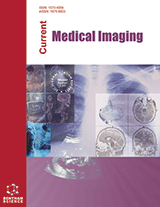
Abstract
Purpose: Individuals with depression have an increased risk of cardiovascular disease, and more often have a poor prognosis with cardiovascular disease. This study aimed to investigate the impact of depression on Left Ventricular (LV) alterations using Cardiovascular Magnetic Resonance Featuretracking (CMR-FT).
Methods: Seven anesthetized, healthy Chinese miniature swine were included in the study. Basic data, including CMR scans at baseline and after 14 days of depression modeling, were collected. Behavioral tests, including the Open-field Test (OFT), Sucrose Preference Test (SPT), and measurements of the time taken to consume a specific amount of food and sugar, were conducted to assess the success of the depression models. CMR cine images were acquired and CVI software was employed to analyze Global Longitudinal Strain (GLS), Global Circumferential Strain (GCS), and Global Radial Strain (GRS). Late Gadolinium Enhancement (LGE) imaging was used to detect myocardial infarction and/or scar.
Results: The outcomes demonstrated successful depression modeling, indicated by reduced scores in the OFT and SPT, as well as an extended time to intake food and sugar compared to baseline. However, no significant differences were observed in LV End-diastolic Volume (LVEDV), LV Endsystolic Volume (LVESV), LV Ejection Fraction (LVEF), LV End-diastolic Myocardial Mass (LVMASSED), and Cardiac Output (CO) before and after modeling. Regarding LV global strain parameters, there was a downward trend in GRS (25.35% ± 6.9% vs. 22.86% ± 6.4%, P=0.021), GCS (-16.71% ± 4.2% vs. -14.78% ± 2.3%, P=0.043), and GLS (-17.66% ± 2.9% vs. -14.53% ± 2.5%, P=0.056), respectively, after modeling. GRS and GCS were significantly reduced after modeling compared to baseline.
Conclusion: The study suggests that depression may contribute to early LV systolic dysfunction, particularly affecting LV GCS and GRS.
Keywords: Depression, Cardiovascular magnetic resonance, Feature-tracking, Swine, Heart failure, Arrhythmia, Myocardial infarction.
 11
11











